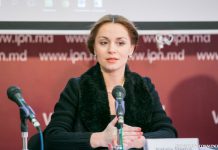The Summit of the Commonwealth of Independent States (CIS) took place in Chisinau on October 9. This event, in the view of the former government, was to crown the victory of the Communists Party (PCRM) in this years parliamentary elections. Moreover, if the PCRM remained in power, the CIS Summit was to sanction the reorientation to the East of Moldovas foreign policy. The PCRMs defeat in the early legislative elections of July 29 and the coming to power of the Alliance for European Integration (AEI) thwarted the plans of the former head of state Vladimir Voronin and his party.
It is known that the parties that formed the AEI have different stances on the fate of the CIS and, especially, on the need of Moldova remaining a member of this regional organization dominated by Russia. Thus, not accidentally, the opponents of the AEI secretly hoped that the organization of the CIS Summit in Chisinau will cause the first cracks in the foundation of the Alliance. Now that the CIS Summit became history, we can say that the expectations of the adversaries of the AEI remained unfulfilled. On the contrary, the Alliance even managed to transform the CIS Summit from a real challenge to its unity into a good opportunity for promoting its own internal and foreign policy objectives, while the results speak for themselves.
First of all, the presence of the President of Russia Dmitry Medvedev at the Summit showed Moscows readiness to cooperate with the new Moldovan authorities. In fact, the statements made by Dmitry Medvedev after the bilateral meetings with Moldovas Acting President Mihai Ghimpu and the Alliances candidate for the presidency Marian Lupu showed that Moscow does not cry after Vladimir Voronin and the PCRM. Attending the Summit, the Russian Foreign Minister Sergey Lavrov confirmed once again that Moscow did not forgive Voronin for the refusal to sign the Kozak Memorandum in 2003.
One fact is for sure – Moscow is looking for new reliable partners in Chisinau. Dmitry Medvedevs consent to hold a meeting with Marian Lupu, ignoring the former president, must be regarded namely through such an angle. Even if we do not know details about the discussions between Lupu and Medvedev, the meeting was a sign that the AEIs candidate for the presidency is supported. Furthermore, Marian Lupus presence at the meeting of the heads of state was the result of the tacit consent of the CIS presidents, especially of the Russian president. These political gestures by Moscow are not at all accidental and the leaders and strategists of the PCRM should treat them seriously.
At the same time, the AEI managed to use the context and tribune of the CIS Summit to announce the major postulates of its foreign policy, namely: 1) Moldovas integration into the EU as main strategic goal; 2) pragmatic, coherent, predictable and transparent relations with the foreign partners, including the CIS; 3) Moldova will not leave the CIS, but its cooperation within this organization will center principally on the development of economic cooperation inside the CIS; 4) the respect for Moldovas status of neutrality by all the states, including Russia, which must withdraw its troops from Transnistria; 5) the Kozak memorandum is an obsolete document, while the Transnistrian dispute will be resolved at talks in the 5+2 format; 6) Moldova wants that the European Union and the United States play a greater role in the identification and guaranteeing of a sustainable political solution to the Transnistrian conflict; 7) the Russian ‘peacekeeping troops must be replaced with an international civil monitoring mission, etc.
The decisions taken at the Summit will have yet a minimum impact on the fate of the CIS, which continues to be an inefficient regional organization that is close to dismemberment. It is true that the CIS heads of state at the Summit examined a decision concerning joint measures aimed at overcoming the financial and economic crisis. It should be noted that this happened only one year after the start of the crisis. In addition, the examined document sets out only the general course of the joint anti-crisis measures as a plan of concrete measures is to be worked out and approved by the governments of the CIS member states. This means that, most probably, the organization will have a finalized anti-crisis plan of action only next year.
Is this a confirmation of the CISs efficiency? Certainly no. Moreover, there are serious reasons to question the successfulness of the future anti-crisis plan of action when no concrete funds for implementing the agreed measures were earmarked and the CIS continues to be confronted with structural problems and the centrifugal actions of its members. The absence of Central Asian presidents from the meeting in Chisinau, where the joint anti-crisis plan of action was discussed, is rather symptomatic.
Of the multiple decisions made at the Summit, only the decisions regarding the celebration of the 65th anniversary of the end of the Second World War can be implemented fully. If so, this will be one more proof that the organization of solemn ceremonies is the best thing that the CIS Summits can do. But this is far from being the role that these meetings must play in the development of the Commonwealth of Independent States. http://info-prim.md/?a=100







